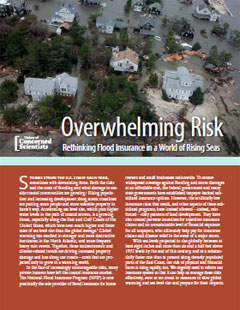Sea level is rising and increasing the risk of destructive flooding events during powerful coastal storms. At the same time, increasing coastal development and a growing population are putting more people and more property in harm's way.
This risky pattern of development is being reinforced by the taxpayer-subsidized National Flood Insurance Program, which sets artificially low insurance rates that do not reflect the true risks to coastal properties. When major disasters strike, taxpayers nationwide are left liable for billions of dollars in insurance claims and disaster relief.
We urgently need to reform our insurance system to more effectively manage and reduce these coastal risks—risks that are projected only to grow in a warming world.




